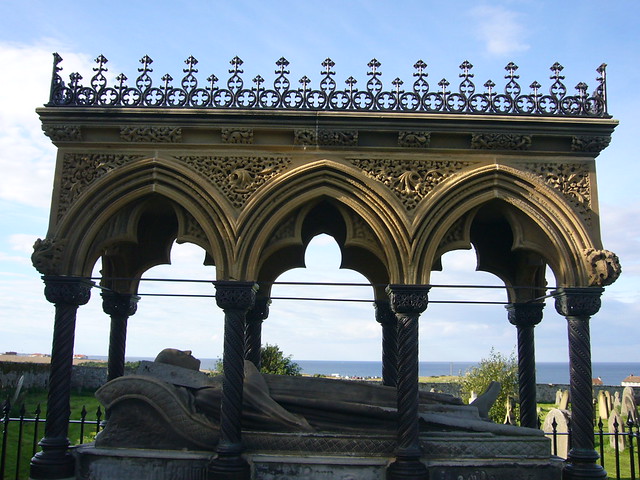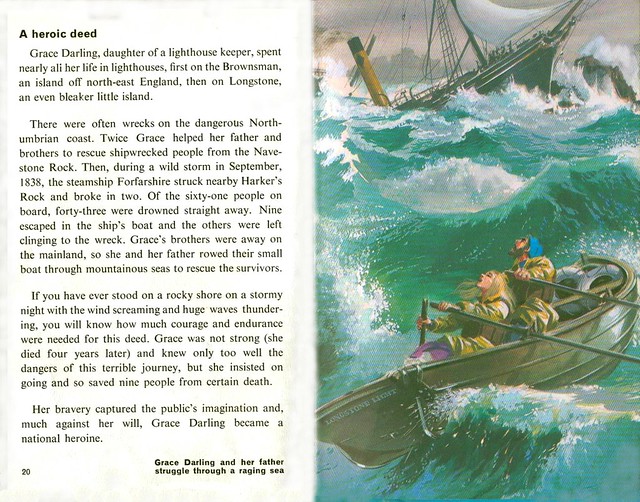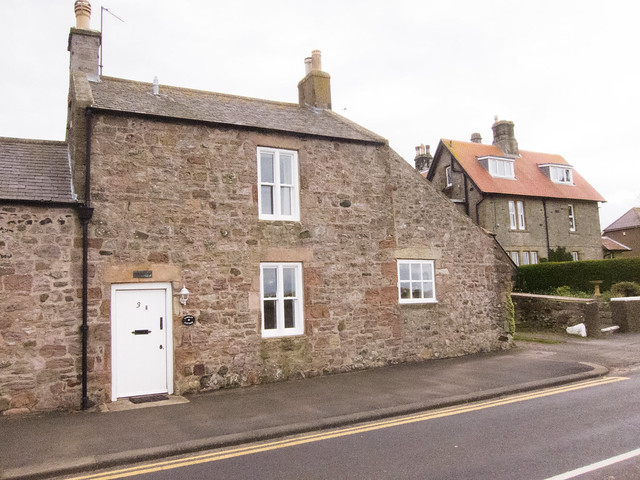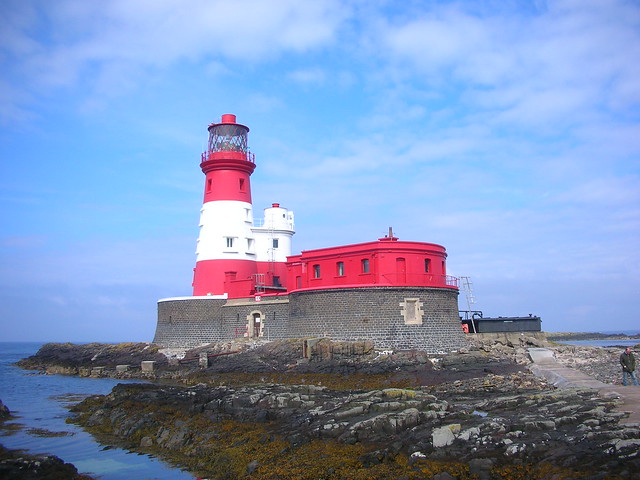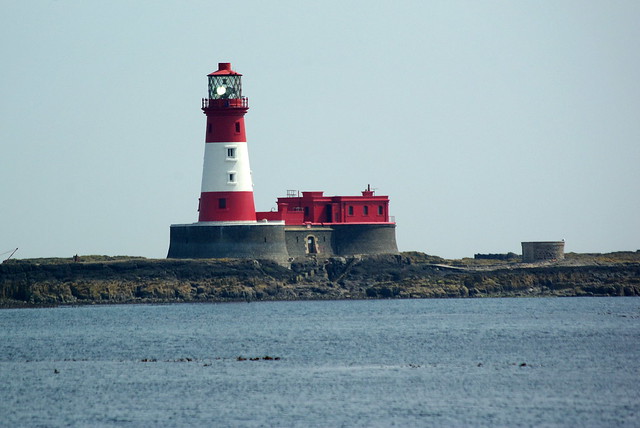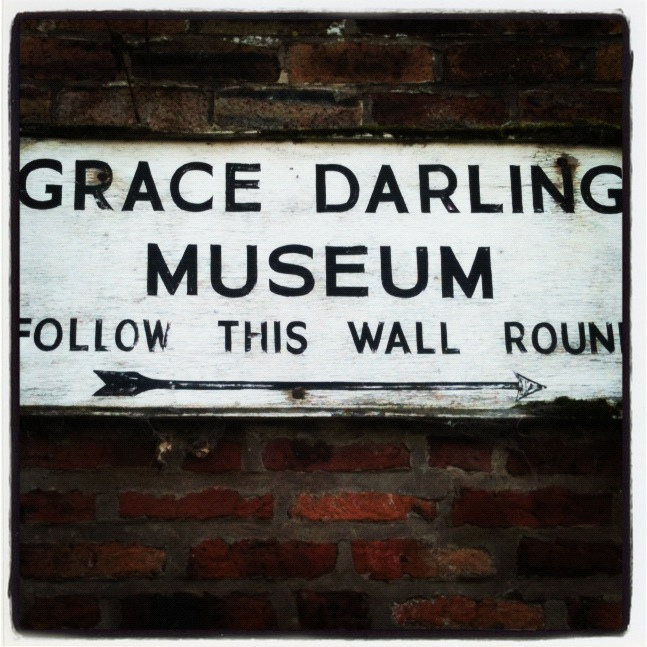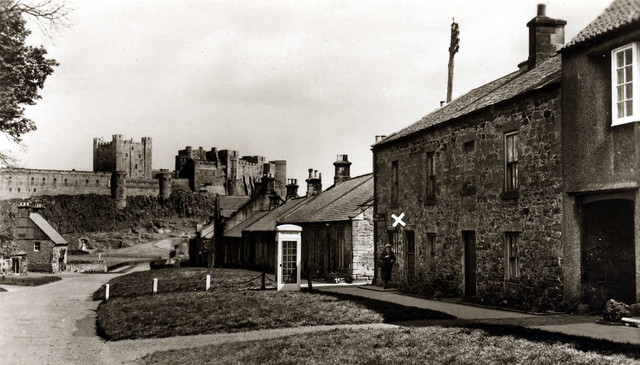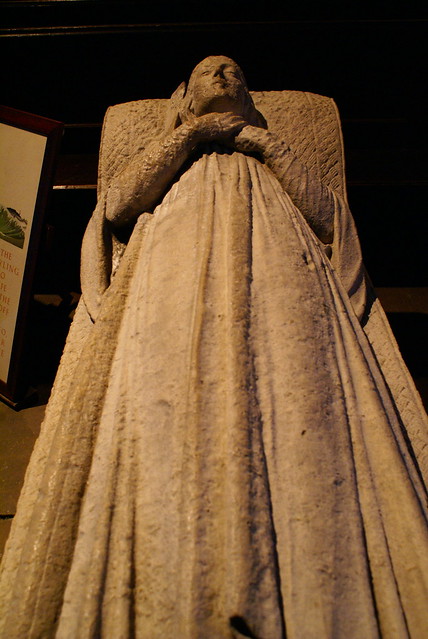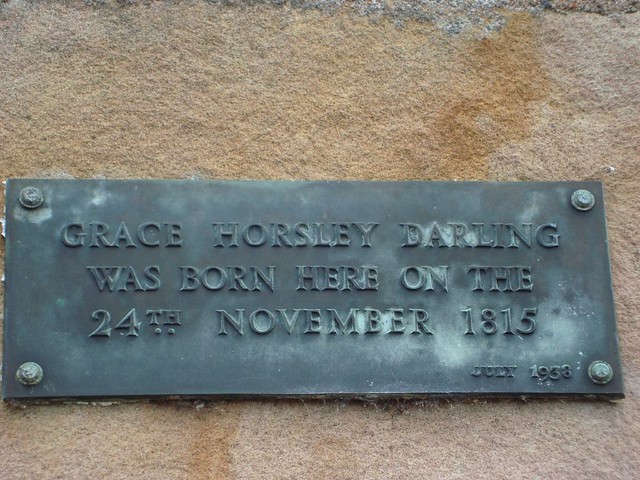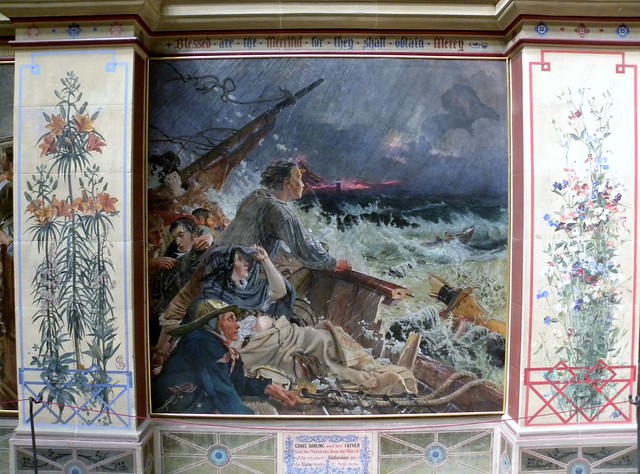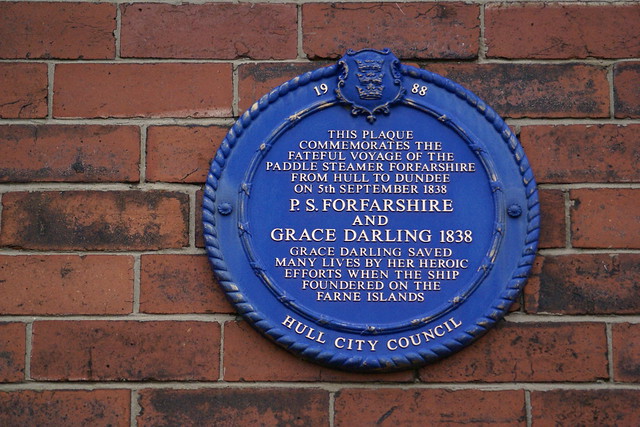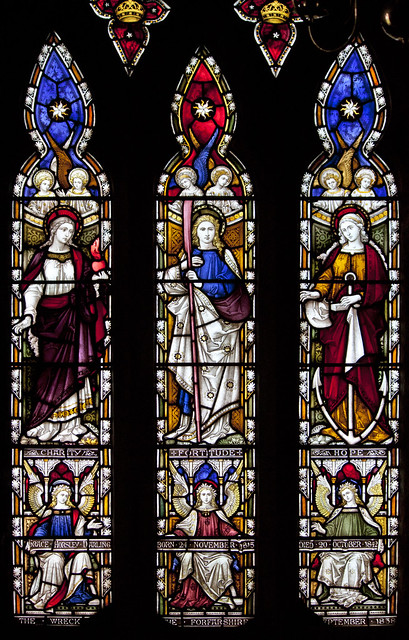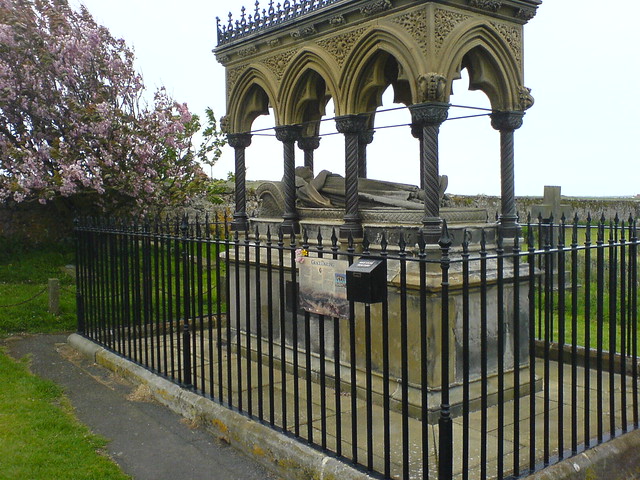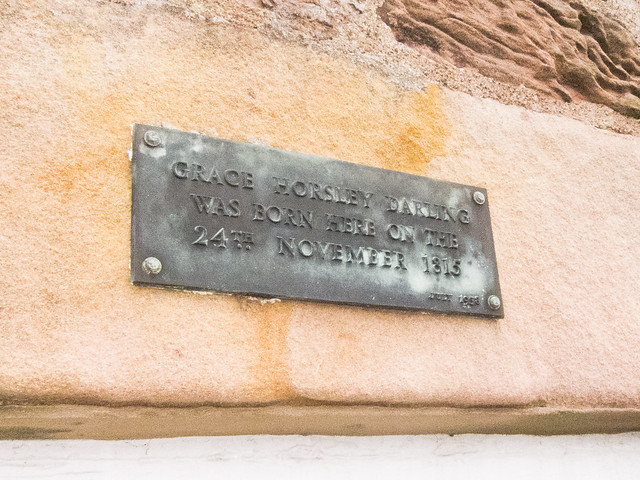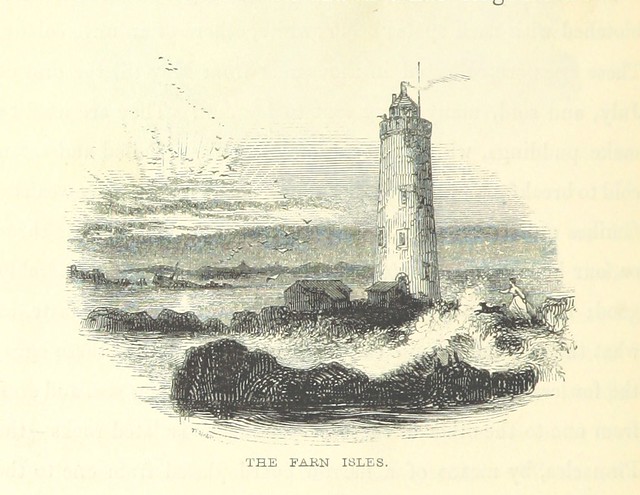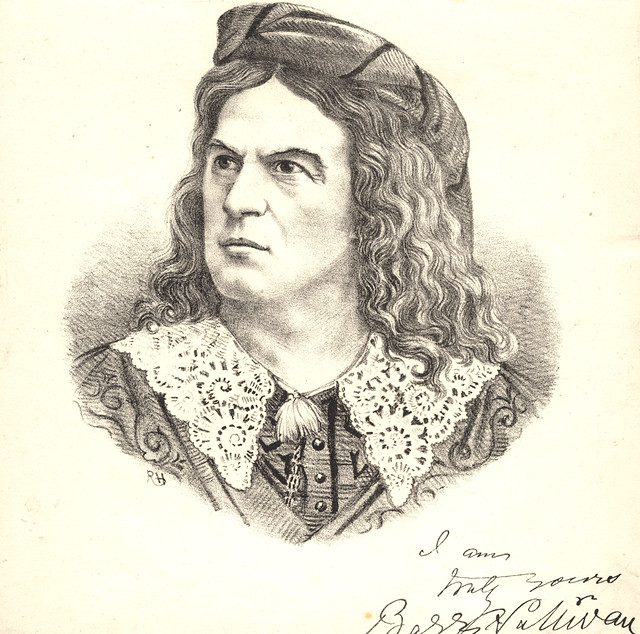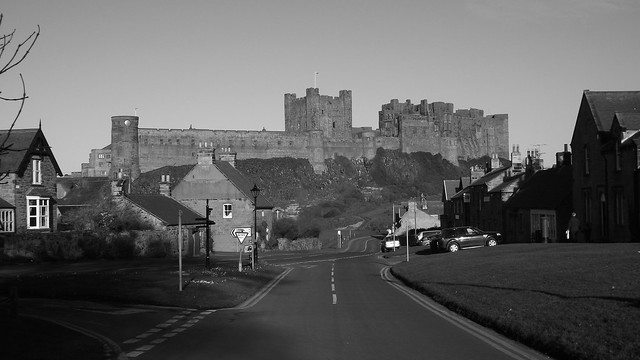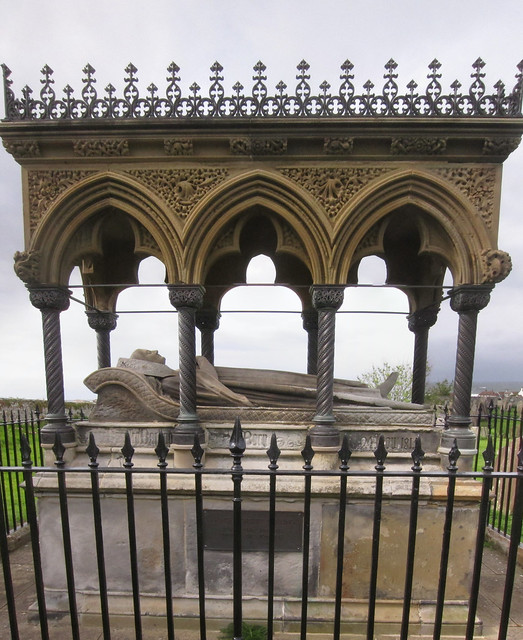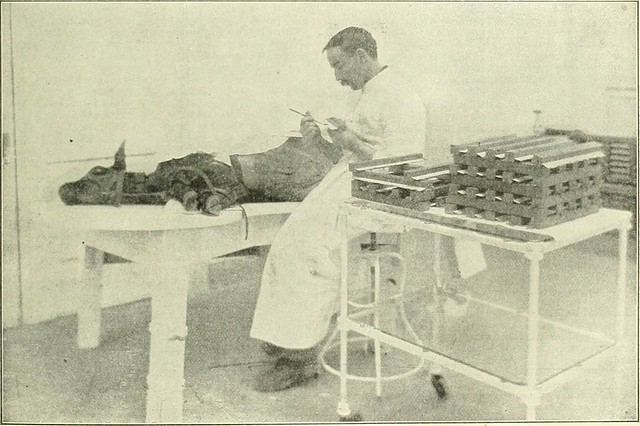Topics > People in History > Grace Darling (1815 - 1842)
Grace Darling (1815 - 1842)
Grace Horsley Darling was born in Bambrugh in 1815. Grace was a lighthouse keeper's daughter and spent much of her life living on the Farne Islands; initially on Brownsman Island, then moving to the lighthouse on Longstone Island in 1826. Grace became famous for her rescue of survivors from the Forfarshire, which was shipwrecked off the Farne Islands on 7th September 1838. News of her role in the rescue quickly spread and she became the nation's heroine, with visits from many portrait painters and donations from the public and Queen Victoria. Grace died from Tuberculosis in 1842 and was buried at St Aidan's Church in Bamburgh, where there is a memorial to her in the churchyard. You can visit the RNLI Grace Darling Museum in Bamburgh.
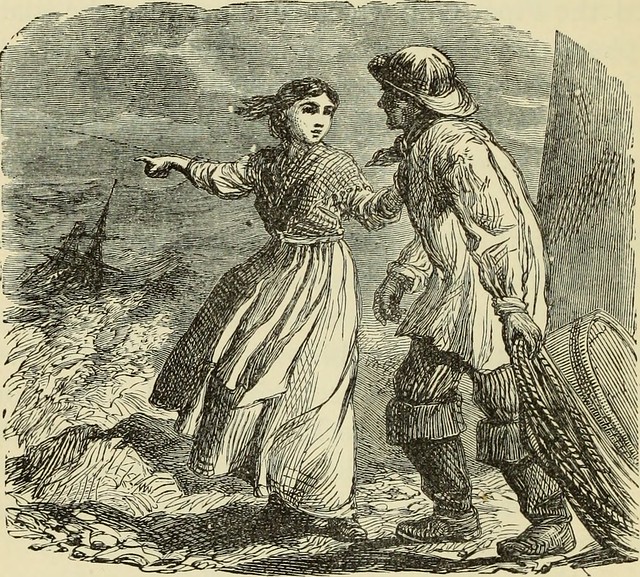
"Towards morning the cries of the unfortunate people on the wreck were heard by Grace Horsley Darling, who, with her father, Mr. W. Darling, kept the outer Farne lighthouse. Grace awoke her father, and as soon as day broke he launched his boat, and prepared to go to the rescue. But noticing the state of the tide and the weather, the old man hesitated to proceed till his heroic daughter, having discovered that some living people were still clinging to the wreck, seized an oar and stepped into the boat. The old man followed her, and together they rowed off to the wreck, through a sea in which a boat could hardly be expected to live. The father, with much difficulty, and after many attempts, succeeded in landing on the rock; and, to save the boat from being dashed to-pieces, the daughter rowed off and on amidst the furious billows, which, but for her dexterity in the guidance of the little coble, would have hurled it in fragments among the breakers. By the exercise of the utmost skill and caution, the nine survivors onthe wreck, consisting of five of the crew and four passengers, were got into the boat and conveyed to the lighthouse." (EN Hoare, Perils of the Deep, London, 1885)
Grace Horsley Darling (24 November 1815 – 20 October 1842) was an English lighthouse keeper's daughter. Her participation in the rescue of survivors from the shipwrecked Forfarshire in 1838 brought her national fame. The paddlesteamer ran aground on the Farne Islands off the coast of Northumberland in northeast England; nine members of the crew were saved.
Biography
Grace Darling was born on 24 November 1815 at her grandfather's house in Northumberland. She was the seventh of nine children (four brothers and four sisters) born to William and Thomasin Darling, and when only a few weeks old, she was taken to live on Brownsman Island, one of the Farne Islands, in a small cottage attached to the lighthouse. Her father ran the lighthouse (built in 1795) for Trinity House, and earned a salary of £70 per year (UK£ in ) with a bonus of £10 for satisfactory service. The accommodation was basic, and the lighthouse was not located in a good place to guide shipping to safety, so in 1826, the family moved to the newly constructed lighthouse on Longstone Island.
Longstone Lighthouse had better accommodation, but the island itself was slightly less hospitable, so William would row back to Brownsman to gather vegetables from their former garden and to feed the animals. The family spent most of their time on the ground floor of the lighthouse, which consisted of a large room, heated by a wooden stove. The room was their living room, dining room, and kitchen in one, and had a spiral staircase leading to three bedrooms above and the light at the top of the tower.
In the early hours of 7 September 1838, Darling, looking from an upstairs window, spotted the wreck and survivors of the Forfarshire on Big Harcar, a nearby low, rocky island. The Forfarshire had foundered on the rocks and broken in half; one of the halves had sunk during the night.
Her father William and she determined that the weather was too rough for the lifeboat to put out from Seahouses (then North Sunderland), so they took a rowing boat (a , four-man Northumberland coble) across to the survivors, taking a long route that kept to the lee side of the islands, a distance of nearly a mile (about ). Darling kept the coble steady in the water, while her father helped four men and the lone surviving woman, Sarah Dawson, into the boat. Although she survived the sinking, Mrs. Dawson had lost her two young children (James, 7, and Matilda, 5) during the night. William and three of the rescued men then rowed the boat back to the lighthouse. Darling then remained at the lighthouse while William and three of the rescued crew members rowed back and recovered four more survivors.
Meanwhile, the lifeboat had set out from Seahouses, but arrived at Big Harcar rock after Darling and her father had completed their rescue operation; all they found were the bodies of Mrs Dawson's children and of a clergyman. Returning to North Sunderland was too dangerous, so they rowed to the lighthouse to take shelter. Darling's brother, William Brooks Darling, was one of the seven fishermen in the lifeboat. The weather deteriorated to the extent that everyone was obliged to remain at the lighthouse for three days before returning to shore.
The Forfarshire had been carrying 62 people. The vessel broke in two almost immediately upon hitting the rocks. Those rescued by Darling and her father were from the bow section of the vessel, which had been held by the rocks for some time before sinking. All that remained at daybreak was the portside paddlebox casing. Nine other passengers and crew had managed to float off a lifeboat from the stern section before it, too, sank, and were picked up in the night by a passing Montrose sloop, and brought into South Shields that same night.
As news of her role in the rescue reached the public, her combination of bravery and simple virtue set her out as exemplary, and led to an uneasy role as the nation's heroine. Grace and her father were awarded the Silver Medal for Bravery by the Royal National Institution for the Preservation of Life from Shipwreck, later named the Royal National Lifeboat Institution (RNLI). Subscriptions and donations totaling over £700 (equivalent to about £ in ) were raised for her, including £50 from Queen Victoria; more than a dozen portrait painters sailed to her island home to capture her likeness, and hundreds of gifts, letters, and even marriage proposals were delivered to her. Her unexpected wealth and fame were such that the Duke of Northumberland took on a role as her self-appointed guardian and founder of a trust, established to look after the donations offered to her. His personal gifts to her family and her included a timepiece and a silver teapot.
Death
In 1842, Darling fell ill while visiting the mainland and was in convalescence with her cousins, the MacFarlanes, in their house in Narrowgate, Alnwick. The Duchess of Northumberland heard of her situation, arranged for her to be moved to better accommodation close to Alnwick Castle, and tended to her in person, as well as providing her with the services of the ducal family physician. Darling's condition declined, however, and in the final stages of her illness, she was conveyed to the place of her birth, in Bamburgh. She died of tuberculosis, historically known as consumption, in October 1842, aged 26. She is buried in the churchyard of St Aidan's Church, Bamburgh. An independent canopied monument, with her sleeping effigy holding an oar, lies at the west edge of the churchyard, north of her grave, to provide a landmark for passing sailors. The original statue (which was eroding) lies within the church. The statue is by Charles Raymond Smith son of James Smith.
The church also has a stained-glass window in her memory.
Legacy
Darling's achievement was celebrated in her lifetime; she received a large financial reward in addition to the plaudits of the nation. A number of fictionalised depictions propagated the Grace Darling legend, such as Grace Darling, or the Maid of the Isles by Jerrold Vernon (1839), which gave birth to the legend of “the girl with windswept hair”. Her deed was committed to verse by William Wordsworth in his poem "Grace Darling" (1843). A lifeboat with her name was presented to Holy Island. One of a series of Victorian paintings by William Bell Scott at Wallington Hall in Northumberland depicts her rescue efforts. The McManus Galleries in Dundee includes three paintings by Thomas Musgrave Joy that celebrate Grace Darling's deeds with the Forfarshire.
At Bamburgh, a museum is dedicated to her achievements and the seafaring life of the area. From 1990-2020 an RNLI Mersey-class lifeboat at Seahouses bore the name Grace Darling. Singer/songwriter Dave Cousins of Strawbs wrote "Grace Darling" (on the album Ghosts) in tribute and as a love song. The children's singing group The Limeliters sang a different "Grace Darling" (featuring the refrain "Help, help, came a desperate yelp!") in their 1962 album, recorded live in concert, Through Children's Eyes. In 2017, Duke Special set Michael Longley's poem "Grace Darling" to music and recorded it on the album Hallow. The Grace Darling Hotel, one of the oldest extant hotels in Melbourne, Victoria, opened in 1854.
Visit the page: Grace Darling for references and further details. You can contribute to this article on Wikipedia.

from http://upload.wikimedia.org/w…
Portrait Grace Darling by Thomas Musgrave Joy
- Public domain image c/o Wikimedia Commons
Added by
Simon Cotterill
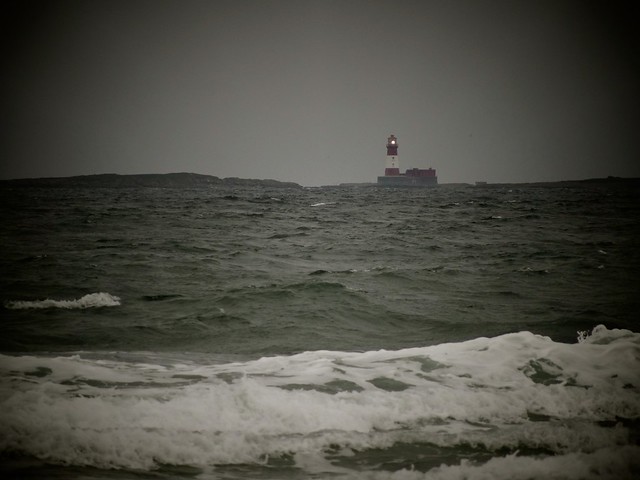
from Flickr (flickr)
Longstone Lighthouse in the Farne Islands - the lighthouse in which Grace Darling lived.
Pinned by Simon Cotterill

from Flickr (flickr)
Image from page 179 of "Perils of the deep : being an account of some of the remarkable shipwrecks and disasters at sea during the last hundred years" (1885)
Pinned by Simon Cotterill
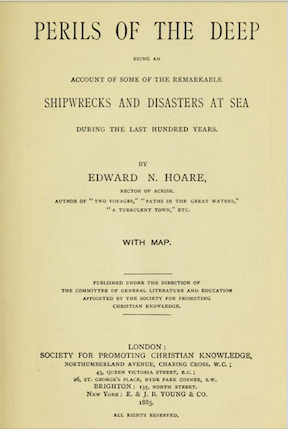
from https://archive.org/stream/pe…
Perils of the deep : being an account of some of the remarkable shipwrecks and disasters at sea during the last hundred years (Edward Hoare, 1885)
- Read Edward Hoare's account of Grace Darling's heroic rescue of crew and passangers from the Forfashire - in his 1885 book about shipwrecks: Perils of the deep : being an …
Added by
Simon Cotterill
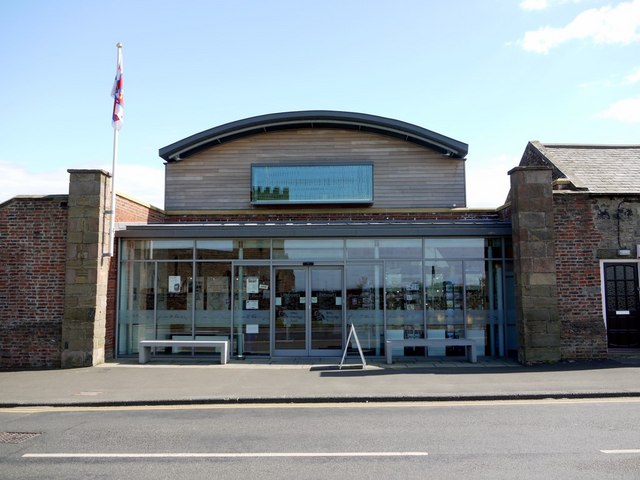
Co-Curate Page
Grace Darling Museum
- Overview Map Street View Grace Darling was awarded the RNLI's Silver Medal for Gallantry. The museum in her home town of Bamburgh was established in 1938 to commemorate her life. …
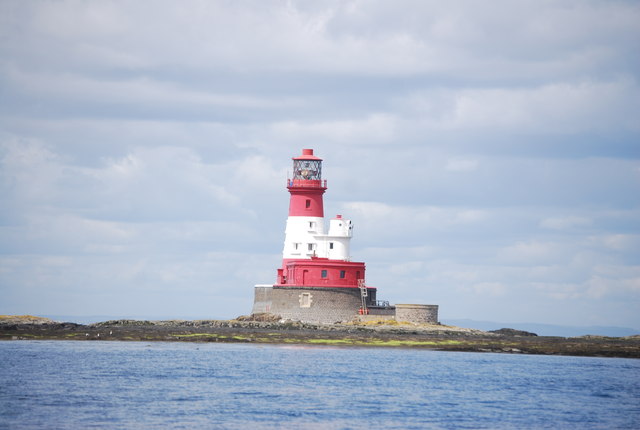
Co-Curate Page
Longstone Lighthouse
- Overview Map Street View Inside The lighthouse and keeper's cottage on Longstone, in the Farne Islands, was built in 1826 by David Alexander for Trinity House, Newcastle. As well as …
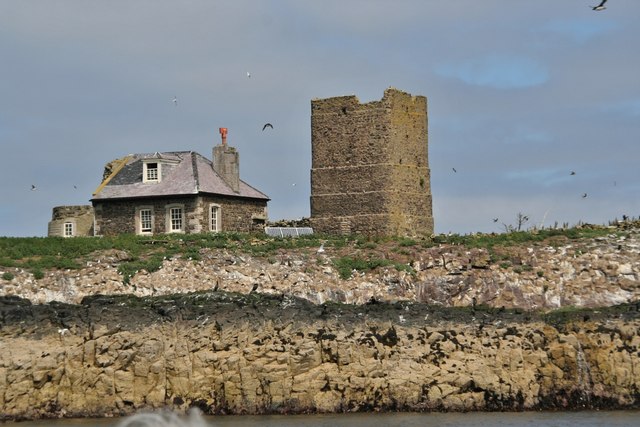
Co-Curate Page
Old Lighthouse and Keeper's Cottage, Brownsman Island
- The lighthouse on Brownsman Island in the Outer Farne Islands was originally built in 1800, and then replaced with a new tower in 1811. At the age of just 3 …
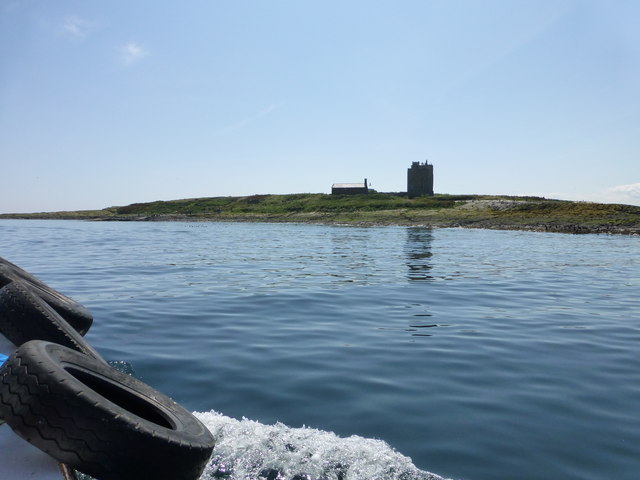
Co-Curate Page
Farne Islands
- Overview About The Farne Islands Map The Farne Islands are located off the coast of Northumberland, just over 2 miles north of Seahouses. Most of the islands are now owned …
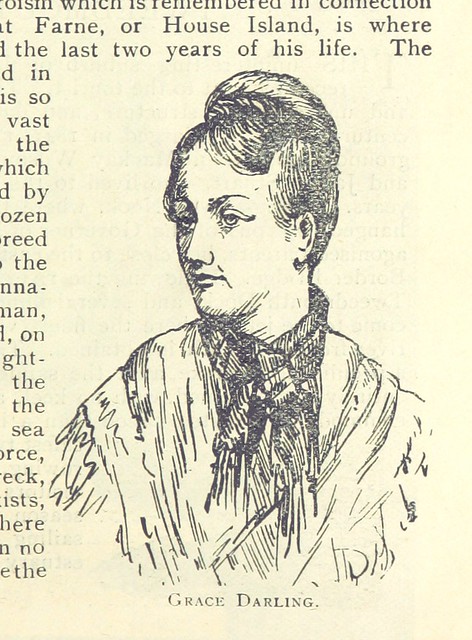
from Flickr (flickr)
Image taken from page 97 of 'The Illustrated Tourists' Guide to the scenery and places of interest ... served by the North Eastern Railway Company. By J. H. Morrison'
Pinned by Simon Cotterill
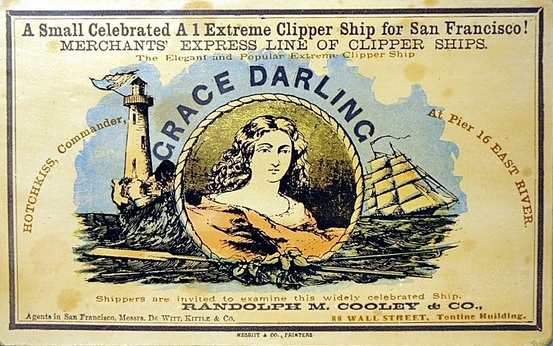
from https://commons.wikimedia.org…
Grace Darling Clipper ship sailing card
- 19th century, Nesbitt & Co. Printers. Public Domain image c/o Wikimedia Commons.
Added by
Simon Cotterill
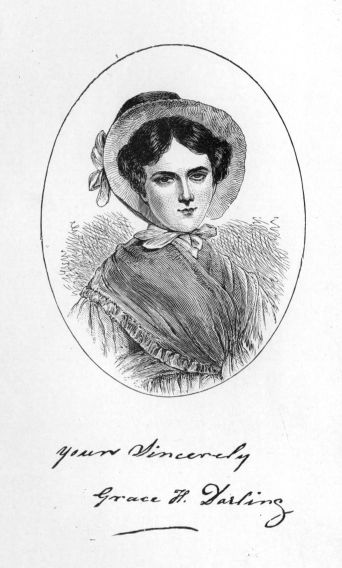
from https://commons.wikimedia.org…
Grace Darling engraving and her signature
- Public Domain image c/o Wikimedia Commons, from The Project Gutenberg eBook, Grace Darling, by Eva Hope.
Added by
Simon Cotterill

from Youtube (youtube)
Centenary of Grace Darling's rescue of shipwreck survivors in 1838 (1938)
Pinned by Simon Cotterill


from http://upload.wikimedia.org/w…
Portrait Grace Darling by Thomas Musgrave Joy
- Public domain image c/o Wikimedia Commons
Added by
Simon Cotterill

from Flickr (flickr)
Longstone Lighthouse in the Farne Islands - the lighthouse in which Grace Darling lived.
Pinned by Simon Cotterill

from Flickr (flickr)
Image from page 179 of "Perils of the deep : being an account of some of the remarkable shipwrecks and disasters at sea during the last hundred years" (1885)
Pinned by Simon Cotterill

from https://archive.org/stream/pe…
Perils of the deep : being an account of some of the remarkable shipwrecks and disasters at sea during the last hundred years (Edward Hoare, 1885)
- Read Edward Hoare's account of Grace Darling's heroic rescue of crew and passangers from the Forfashire - in his 1885 book about shipwrecks: Perils of the deep : being an …
Added by
Simon Cotterill

Co-Curate Page
Grace Darling Museum
- Overview Map Street View Grace Darling was awarded the RNLI's Silver Medal for Gallantry. The museum in her home town of Bamburgh was established in 1938 to commemorate her life. …

Co-Curate Page
Longstone Lighthouse
- Overview Map Street View Inside The lighthouse and keeper's cottage on Longstone, in the Farne Islands, was built in 1826 by David Alexander for Trinity House, Newcastle. As well as …

Co-Curate Page
Old Lighthouse and Keeper's Cottage, Brownsman Island
- The lighthouse on Brownsman Island in the Outer Farne Islands was originally built in 1800, and then replaced with a new tower in 1811. At the age of just 3 …

Co-Curate Page
Farne Islands
- Overview About The Farne Islands Map The Farne Islands are located off the coast of Northumberland, just over 2 miles north of Seahouses. Most of the islands are now owned …

from Flickr (flickr)
Image taken from page 97 of 'The Illustrated Tourists' Guide to the scenery and places of interest ... served by the North Eastern Railway Company. By J. H. Morrison'
Pinned by Simon Cotterill

from https://commons.wikimedia.org…
Grace Darling Clipper ship sailing card
- 19th century, Nesbitt & Co. Printers. Public Domain image c/o Wikimedia Commons.
Added by
Simon Cotterill

from https://commons.wikimedia.org…
Grace Darling engraving and her signature
- Public Domain image c/o Wikimedia Commons, from The Project Gutenberg eBook, Grace Darling, by Eva Hope.
Added by
Simon Cotterill

from Youtube (youtube)
Centenary of Grace Darling's rescue of shipwreck survivors in 1838 (1938)
Pinned by Simon Cotterill
